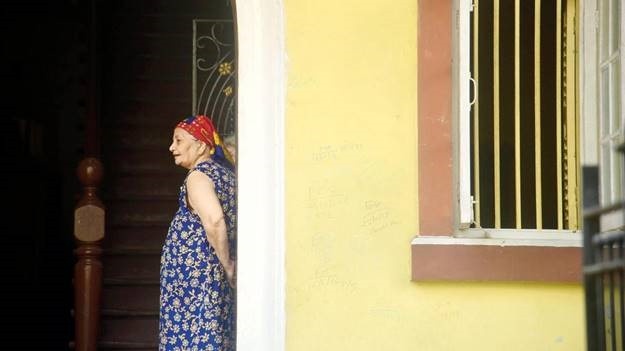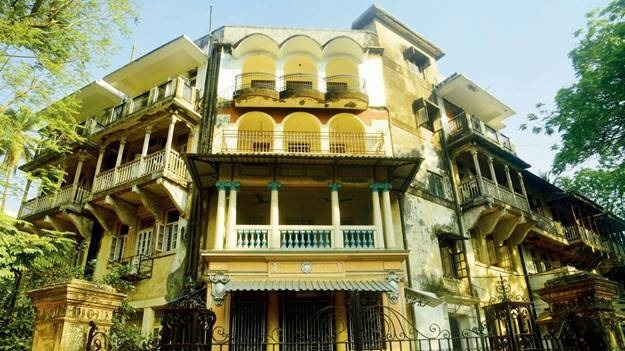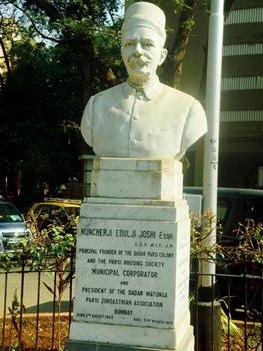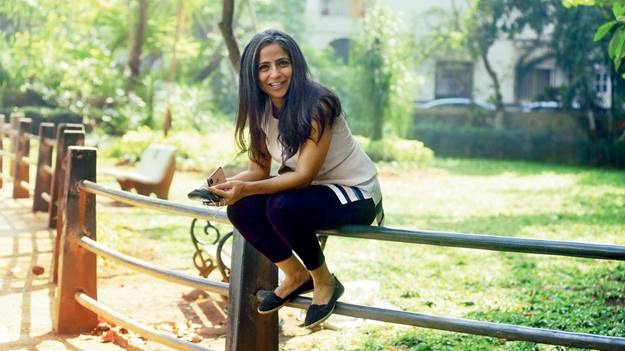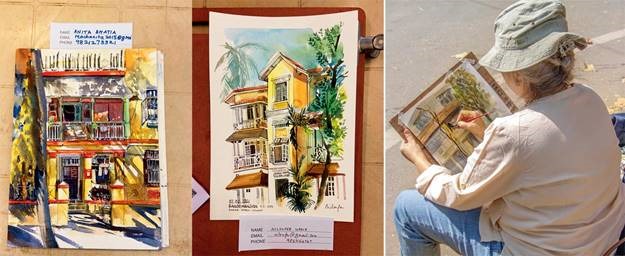A Dadar Parsi Colony resident’s four-year-old attempt at using photos, anecdotes, municipal records, memories and sketches to the iconic neighbourhood in a book speaks of public participation in conserving the cityscape.
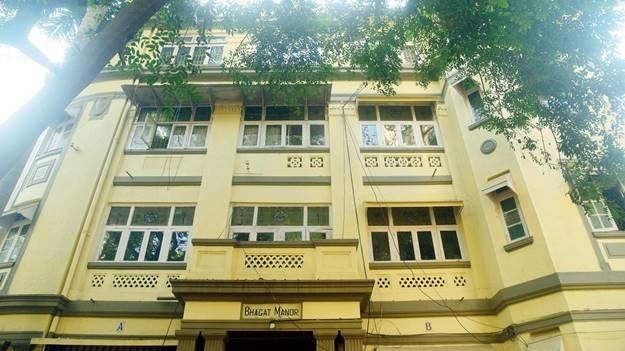
The houses in the enclave, says Engineer, comprise an interesting mix of cottage-style villas and apartments to accommodate more families. Some structures also have visible Art Deco elements
Article by Jane Borges | Sunday Mid-Day
At 9 am, Kayomi Engineer is already out and about. She has just finished taking photographs on her phone, when we meet her at the police chowkie near Five Gardens, Dadar Parsi Colony. Six of these images, which include early morning scenes from the neighbourhood, immediately make it to the Instagram handle @mancherjijoshiparsicolonydadar. Since 2017, the social media account has been the mainstay for news and picturesque views of the enclave, fondly known as DPC among locals. Home to nearly 5,000-odd residents—99 per cent of whom, she says, belong to the Zoroastrian community—the “residential estate” will soon be the subject of a book penned by Engineer. It’s a 21-year-long dream, she says, as she walks us through the precinct, situated in F North Ward.
The idea for the book took concrete shape sometime after Engineer, who formerly worked as administrative director of the Kala Ghoda Association (KGA), started her Instagram account. “It’s something I created on an impulse, kicking around a football with our daughter. A user-friendly online platform to educate publicly, the larger essence of what this locality stands for, to us as residents and to Mumbai. I realised that many residents didn’t have old photographs of the colony, because nobody had really gone around photographing the locality. So, it was an attempt to document and archive the place, too. I did not anticipate having 1,200-plus followers organically.” That was a huge motivation, she adds. Having worked on restoration projects while at the KGA, and being given the rare opportunity to play “understudy” to leading conservation architects such as Vikas Dilawari, has also bolstered her to apply for a UNESCO accreditation for the enclave. Initially slated for release in November last year, research for the book hit a roadblock due to the lockdown. But Engineer feels that putting timelines to a work like this —one that has not been attempted before—would be unfair. “I invest time and effort on working with details, because the book is a one-time project that I have embarked upon, and I might as well ace it.”
An elderly resident seen outside her home at Mancherji Joshi Parsi Colony, a century-old residential enclave, which was built in the aftermath of the bubonic plague to decongest the over-crowded islands of Bombay. Pic/Atul Kamble
Dadar Parsi Colony’s history is closely tied to the pandemic—not the one we are living through, but the bubonic plague, which caught Bombay unawares in the late 1890s. At the time, the British-run municipal corporation took up initiatives on war-footing to expand the city’s limits to Dadar and Sion, in order to decongest the over-crowded islands of Bombay in the south. Well-planned urban community neighbourhoods like Shivaji Park and DPC, which has been named after its founder member and visionary Mancherji Edulji Joshi, marked a turning point in the city’s visual scape.
Edulji, a civil engineer with the Bombay municipality, had persuaded authorities to set aside around hundred plots for the middle-class Parsis. He then prepared a blueprint for a self-sustained neighbourhood, which apart from residential structures—an interesting mix of cottage-style villas and apartments that could accommodate more families—had a school, fire temple, gymkhana, gardens and even a ‘madressa’, where children underwent training to become priests. His planning was so detailed that he even decided on the different types of trees that were to be planted here.
The colony was built ground up by 1925, after clearing its existing geographic makeup, as vacant land, back in the early 1900s. Joshi was supported by stalwarts like Eruchasha Tarapore, Ardeshir Homavazir, Bapaimai Dalal and others, who’d later make the colony their home. “It was a community effort, and it came from a sensibility that if the Bombay Improvements Trust was developing a new locality post a pandemic, it was being built for its people, hence it had to be a stellar urban development of its time. Relocating people meant having to provide for them, and that took effort. The byproduct today is Mancherji Joshi Parsi Colony, Dadar, a place that is rich in a healthy environment of flora, fauna, heritage and now great architectural value,” says Engineer, adding, “A lot of the housing was built with a larger sense of charity and philanthropy. Someone back then thought and understood the value of what they were building and engineering, and how
it would help sustain generations to come.”
Joshi is a jewel in the crown of the Engineer family. He is grandfather to Engineer’s mother-in-law, Zareen. While that was the impetus for her to dig deeper into the family history, Engineer shares that having had her own grandparents live here, and later marrying into a family from the enclave, meant that her connection with the colony ran deep. “Mancherji Joshi’s name is said in the neighbourhood’s Rustom Faramna fire temple in certain Zoroastrian prayers, even today, and that is something—to be remembered decades later for the work you did. But then that is the kind of homage we pay to a visionary, as a community.”
A bust of late Mancherji Edulji Joshi, a civil engineer with the municipal corporation, and founder member of the Dadar Parsi Colony in 1925. Joshi is the grandfather of Engineer’s mother-in-law Zareen
Last Sunday, Engineer along with Zainab Tambawalla of Urban Sketchers Mumbai—part of Urban Sketchers, an international non-profit dedicated to fostering a global community of artists who practice on-location drawing—organised a sketch walk at the colony. The three hour-long event saw 90 sketchers recreate different buildings across the sprawling enclave on paper. Since the area they were covering was vast, a visual map of some of the iconic structures was created. “This was a pilot run. We hope to have more such collaborations in the future, because I want to have every single building in Parsi Colony hand-drawn, and sketched for archival value,” says Engineer. As part of the collaboration, a few sketches will be included in Engineer’s book. “What we’ve done is taken the works of the artists and scanned them. The originals are with them. As we go through the curatorial process of what goes into the book, we will shortlist the final works. The artists have been kind enough to do this for us pro-bono. But, to me, this effort would have reached a full circle, if a particular resident from a particular building bought the artwork of their home,” says Engineer, who is also purveyor (Mumbai and Maharashtra), for India Lost and Found, @indialostandfound, a not for profit, national volunteer campaign, dedicated to heritage conservation across India.
Collaboration is at the heart of Engineer’s work. Without divulging too many details about the book, she says that it will have contributions by various experts. Police historian Deepak Rao will throw light on the Matunga police station. “Since its inception, the police station—formerly known as Kingsway police station—has had the responsibility of protecting and safeguarding the residents of the colony. It’s a parallel story to DPC and it has to be told.”
Kayomi Engineer, who started the Instagram handle @mancherjijoshiparsicolonydadar in 2017 to archive and document her locality, says writing this book has been a 21-year-long dream. Pics/Atul Kamble
Work on the book, however, she says would have been incomplete without the efforts of many city officials, especially local corporator Amey Ghole, who supported this project idea, when Engineer shared it with him four years ago. “Because DPC is also home to him, he’s the ideal intermediary city official as official liaison, for this locality. We have created a successful working auspice with 211 residents volunteering daily as stakeholders, to look after their resident precinct,” she says. “A lot of city officials are working quietly here in our ward offices, many of whom we don’t even meet or know. The city’s heritage department has been very helpful with data on archives and records. I literally went to them, as an over-enthused Parsi, saying, ‘Sir, mala hey information payje, mala pustak lihaichi aahe.’ And they said, ‘Yes ma’am, how can we help?” she adds. At the end of the day, her ikigai is conservation. “We have to understand that we are now a significant residential space within a larger megapolis, and for it to be retained in its utopian Alice-in-Wonderland-like environs, the people who live here will have to do something to restore, maintain, preserve and conserve DPC. At a certain stage in my life, when I look back, I want to be able to reminisce gladly that I spent time doing this.”
Artists from Urban Sketchers Mumbai seen attending the sketch walk last Sunday. As part of the collaboration, a few sketches will be included in Engineer’s book. Pics courtesy Zahan Lamba and Urban Sketchers Mumbai
5,000
Approx. number of residents in DPC, 99 per cent of them Zoroastrians

